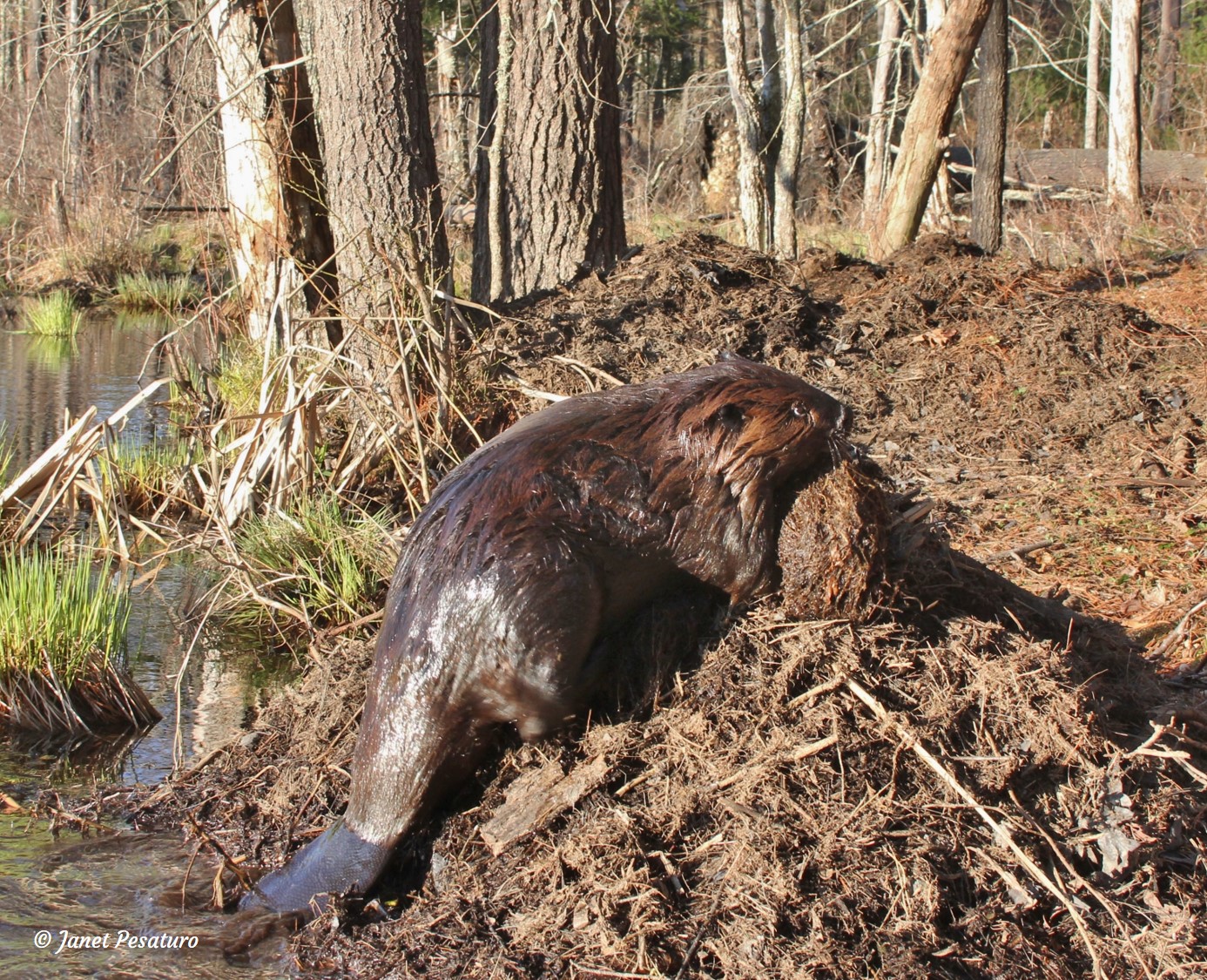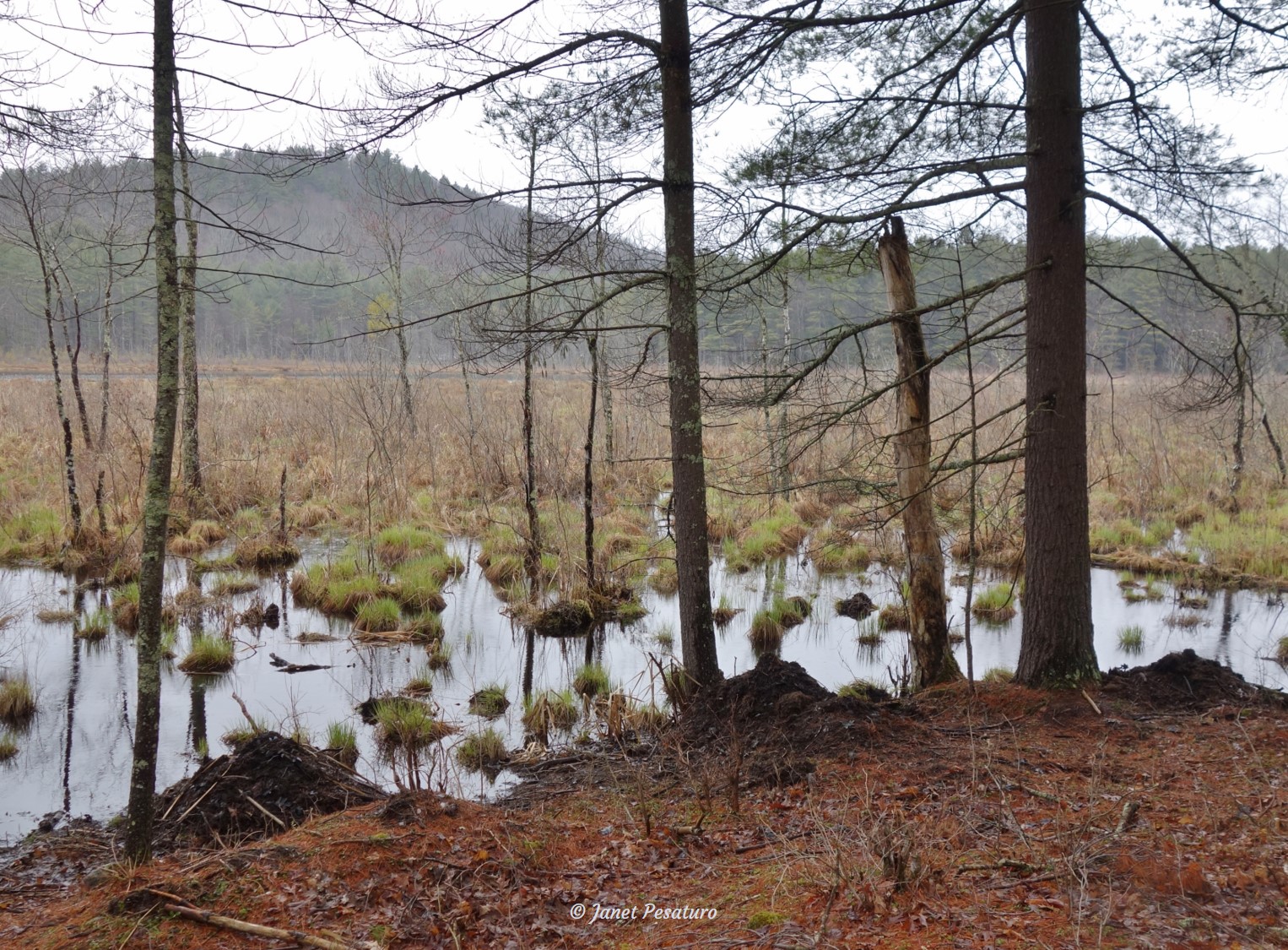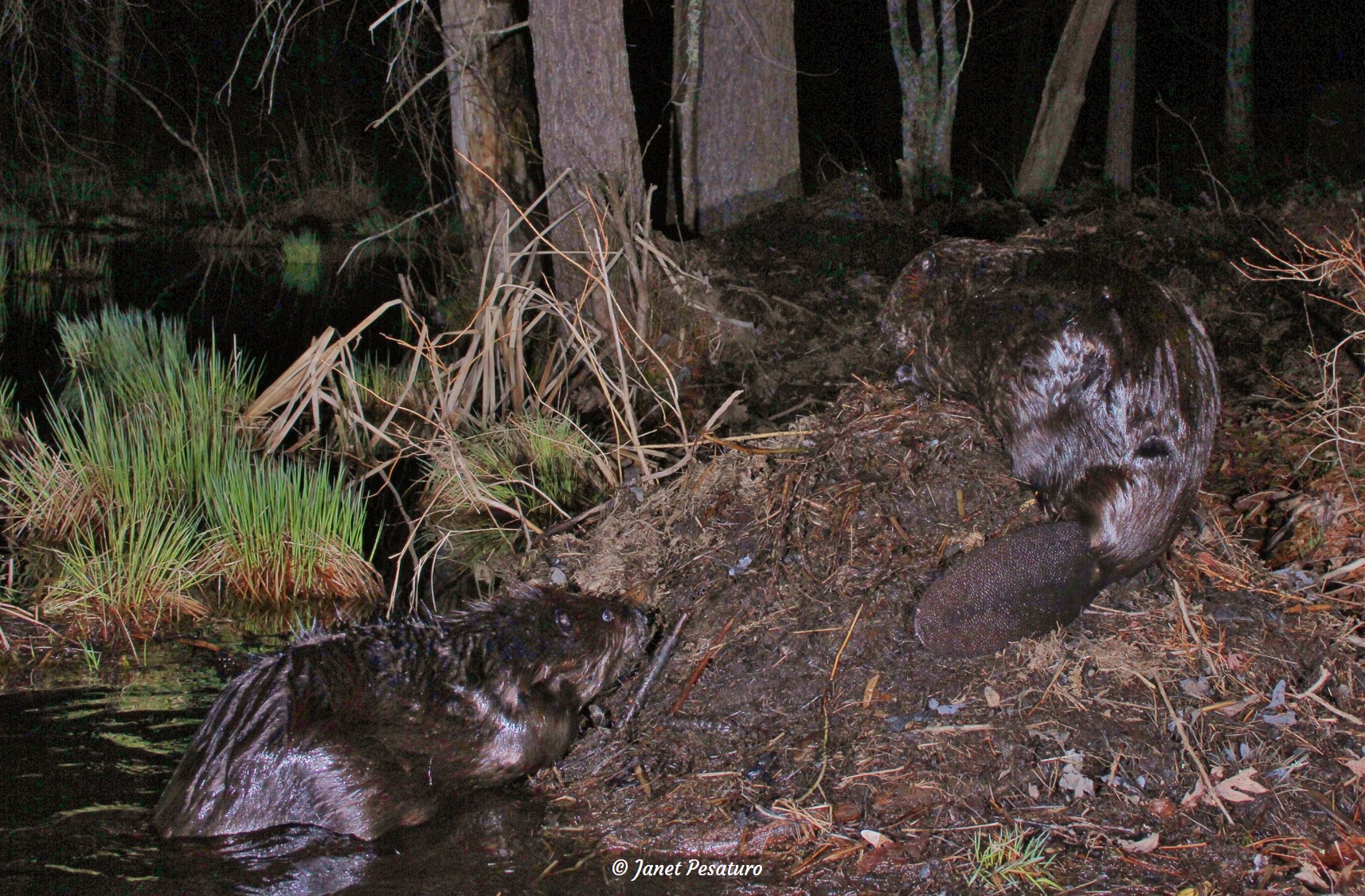Beaver Scent Marking and Population Density

North American beavers (Castor canadensis) mark their territory by creating mounds of debris onto which they deposit scent from their castor sacs and possibly anal glands. Some beaver wetlands are marked sparsely with a few small mounds here and there, while others are heavily marked with many large scent mounds. What accounts for the difference? It turns out that there is a correlation between beaver scent marking and population density, and possibly also with site quality. This seems intuitive. More beaver families in an area mean more dispersing juveniles in spring, the time of year when scent mound construction peaks. And, high quality habitat will receive more attention from dispersing beavers, which would prompt resident beavers to mark their territory.
But we don’t need to rely on intuition because the correlation between beaver scent marking and population density has been systematically studied. Beavers make more scent mounds, the shorter the distance to the nearest neighboring colony, and the more active colonies there are within 5 kilometers.
A series of scent mounds along a pond edge is sometimes called a “scent fence” because it deters dispersing beavers from intruding or remaining at the marked site. It may also be used as a means of assessment during interactions between resident and trespassing beavers.

And here’s a video captured at the pond in the above photo, showing aggressive interactions. There are two separate clips, each from a separate event. First a resident beaver charges an intruder (presumably) who is off camera. Second, one beaver chases another (very likely an intruder) who escapes into the pond.
And now take a look at my recent video of scent mound construction. I’ve posted this kind of footage before, but only with an old camera that took poor quality video. The video below was captured with a Browning Recon Force Advantage which takes nice video AND audio. Turn the volume up, and you can hear a juicy fart-like sound when the beaver extrudes his secretions on top of the mound 🙂
Most beaver ponds I’ve seen were lightly marked, but I’ve seen a few that were heavily marked with numerous, large, conical, smelly mounds. Here are some of my own observations about these heavily marked wetlands:
- They were all in areas of gentle terrain, with low gradient stream systems and very wide valley bottoms. Beavers love this kind of terrain, because they can create a larger pond when they dam the stream. A larger pond means space for more beaver lodges. A larger pond also has a larger perimeter which allows beavers to access a lot of terrestrial vegetation without risky travel far from the pond. Beavers are mostly safe from predators in the water, but rather clumsy and vulnerable on land. So, it makes sense that a site like this would be in high demand, causing resident beavers to mark it heavily.
- There were at least two lodges in each pond.
- Around these ponds there were relatively few deciduous trees and a lot of conifers. This is interesting because on the one hand it seems that there would be less interest wetlands without a lot of preferred food. But on the other hand, a dearth of preferred plant species in the broader landscape intensifies competition for food, and therefore could intensify scent marking….at least until edible species are nearly depleted and beavers can no longer eke out a living. (See Tree Preferences of the Beaver.)
- The scent mounds were clustered in certain areas around the pond, not evenly or randomly distributed. This too makes sense. Resident beavers may place them where intrusion by other beavers is most common.
What are your observations about beaver scent marking? Feel free to leave your thoughts and questions in a comment below!

Sources
- Muller-Schwarze, D. and S. Heckman. “The Social Role of Scent Marking in Beaver (Castor canadensis).” Journal of Chemical Ecology. 6 (1980): 81-95.
- Houlihan, P. W. “Scent Mounding by Beaver (Castor canadensis): Functional and Semiochemical Aspects.” [M. S. thesis]. Syracuse: State University of New York College of Environmental Science and Forestry, 1989.

Red maple is one of the least preferred foods for beavers. Red maple is a preferred food for deer and moose. Is this difference in selection due to nutrient content or some other characteristic of red maple, or was it a part of evolution to reduce species competition for red maple?
Hi Bob, I think it has to do with the plant’s defense compounds and the herbivore’s ability to detoxify them. Plants and herbivores are in an evolutionary arms race: Plants evolve defenses against herbivory, such as unpalatable or toxic compounds. Herbivores then evolve methods of tolerating or detoxifying these compounds, and then the plant evolves a new defense…and on and on it goes. Different herbivores have evolved different ways of dealing with different plant defenses, and the result is that different herbivores have different plant preferences. Reducing species competition for specific plants is an interesting thought and could very well figure in to the evolutionary process. For example, porcupines and beavers overlap in range and habitat. Beavers don’t eat much hemlock, which leaves an abundance of hemlock trees around some beaver ponds. That would create an evolutionary incentive, so to speak, for porcupines to evolved the ability to consume hemlock. Just speculation…
Pingback:River Otter Latrines: Finding and Identifying Them - Winterberry Wildlife
It is so interesting to me reading about beaver in the Eastern US. Here I am in Colorado, learning about beavers, which are not common here. There are no red maples or hemlock trees. All the beaver (ONE only so far) is chewing, is willows and cottonwoods. Thank you, Janet for this blog. Appreciate the info. Will now go looking for more mounds.
Hi Ulli, I’m in the same boat trying to find beaver sign in Montana, where they are much less common than in Mass. We do find fresh beaver sign from time to time but we’ve found only 1 scent mound and it was very small. It looks to me like beavers have trouble hanging on – they show, and then they’re gone. I’m not sure how heavily they are trapped, which could certainly be a factor, but we also have wolves, grizzlies, mtn lions, and wolverines, all of which hunt beavers. BTW, cottonwoods and willows are great beaver foods.